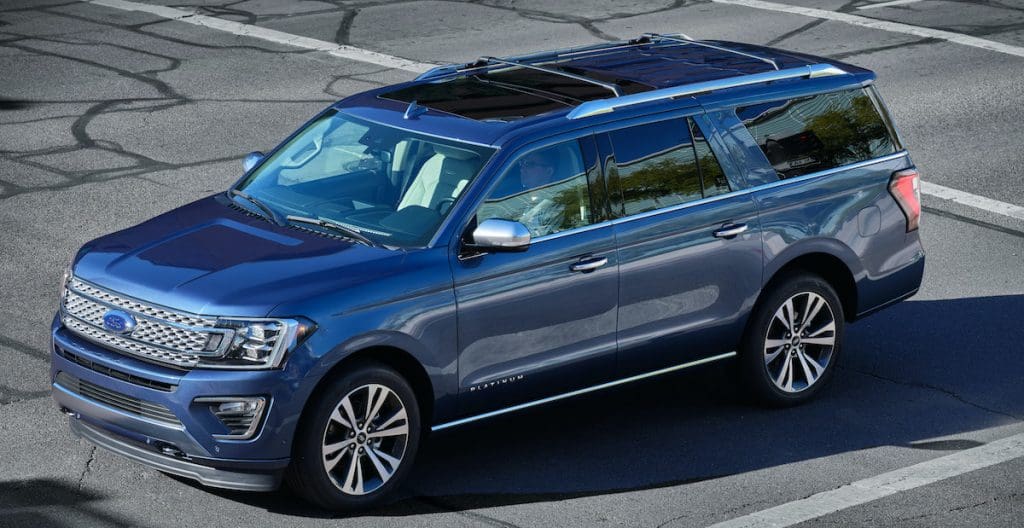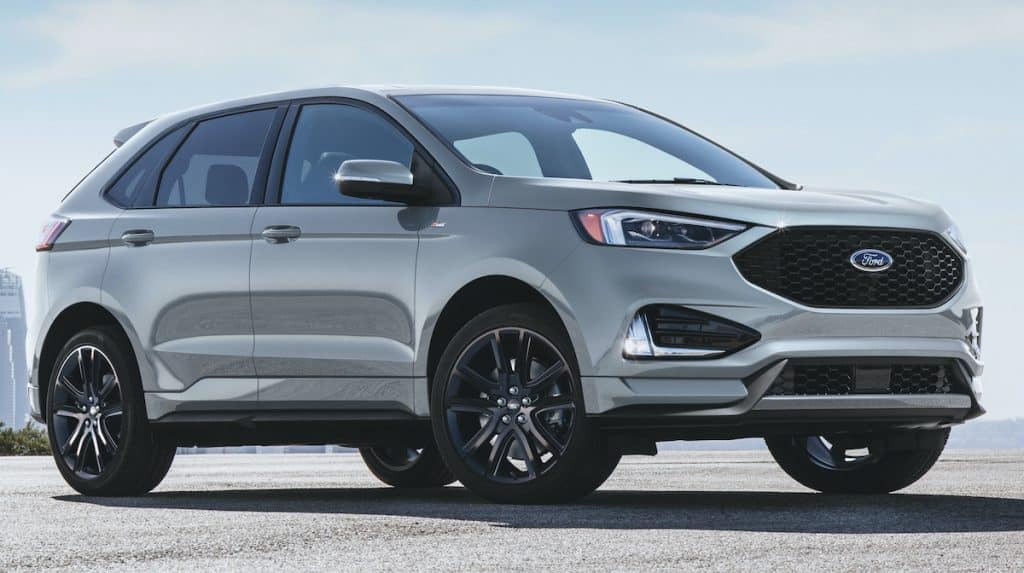Buyers Have Choices When Shopping for a Ford SUV
Platinum trim level and Max body style– it doesn’t get much better! Our latest Ford Expedition tester represented just how far Ford has come in capability, sophistications and flexibility over the last couple of years with the clever redesign of key vehicles in its SUV line-up. It also shows that Ford is capable of asking over $80K for its top-of-the-line, fully-equipped large SUV.
The Max adds little more than nine inches length to the standard wheelbase, adding rear-seat legroom and cargo capacity, and it’s available on any Expedition trim level. The Platinum trim boosts the horsepower to 400 with the 3.5-liter twin-turbocharged EcoBoost V6 engine mated to a 10 speed automotive transmission. Our tester also featured the four-wheel drive option; another upgrade that’s available onall trims from the standard rear-wheel drive. The Expedition’s space and its towing capacity (up to 6,300 pounds or 9,000 pounds with the heavy-duty trailer towing package option) are its key selling points.

Expedition Platinum introduces more premium updates for 2020, including leather-wrapped instrument panel topper and door rollovers, plus more aluminum interior touches
In the mid-size SUV category, the Ford Edge drives nice and tight like a sedan. It’s comfortable, roomy and a little nicer than some comparisons at a similar price range. Edge is a great choice for buyers looking for a vehicle loaded with standard technology like Ford Co-Pilot360™, FordPass Connect™ with 4G LTE Wi-Fi hotspot, Post-Collision Braking and a rotary dial gear shifter, standard on all Edge trim levels. Other available tech features include Enhanced Active Park Assist, Evasive Steering Assist, Adaptive Cruise Control with Stop-and-Go and Lane-Centering, a 180-degree front camera, All-Wheel-Drive Disconnect, a wireless phone charging pad, and SYNC® 3 with Apple CarPlay™, Android Auto™, Waze and Ford+Alexa™ compatibility.
Our Edge Titanium tester in new Star White Metallic Tri-Coat paint was all about both tech and luxury with a price tag in the mid $40s. The package included 20-inch polished aluminum wheels, body color lower side cladding with bright chrome inserts, body color-painted bumpers with a bright chrome insert up front, and bright chrome accents and surround on the upper grille. Inside, Titanium adds dark red/brown Brunello with Brick Red accent stitching on the front and rear floormats and door inserts and aluminum appliques on the instrument panel.
Ford is adept at offering choices, as evidenced by its comprehensive line-up of five different SUV choices from compact to full size. In each segment, Ford buyers have engine choices, trim level choices and tech options, allowing them to pick what is most important to them and best fits their budget.

